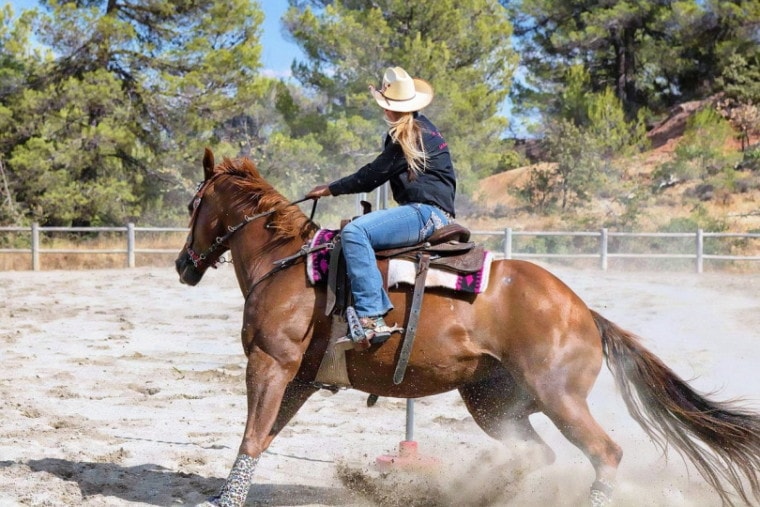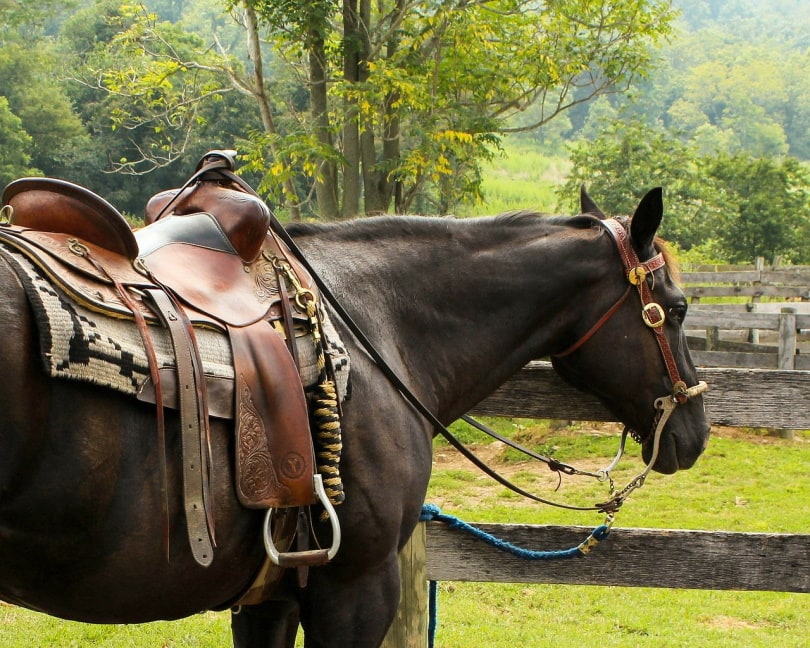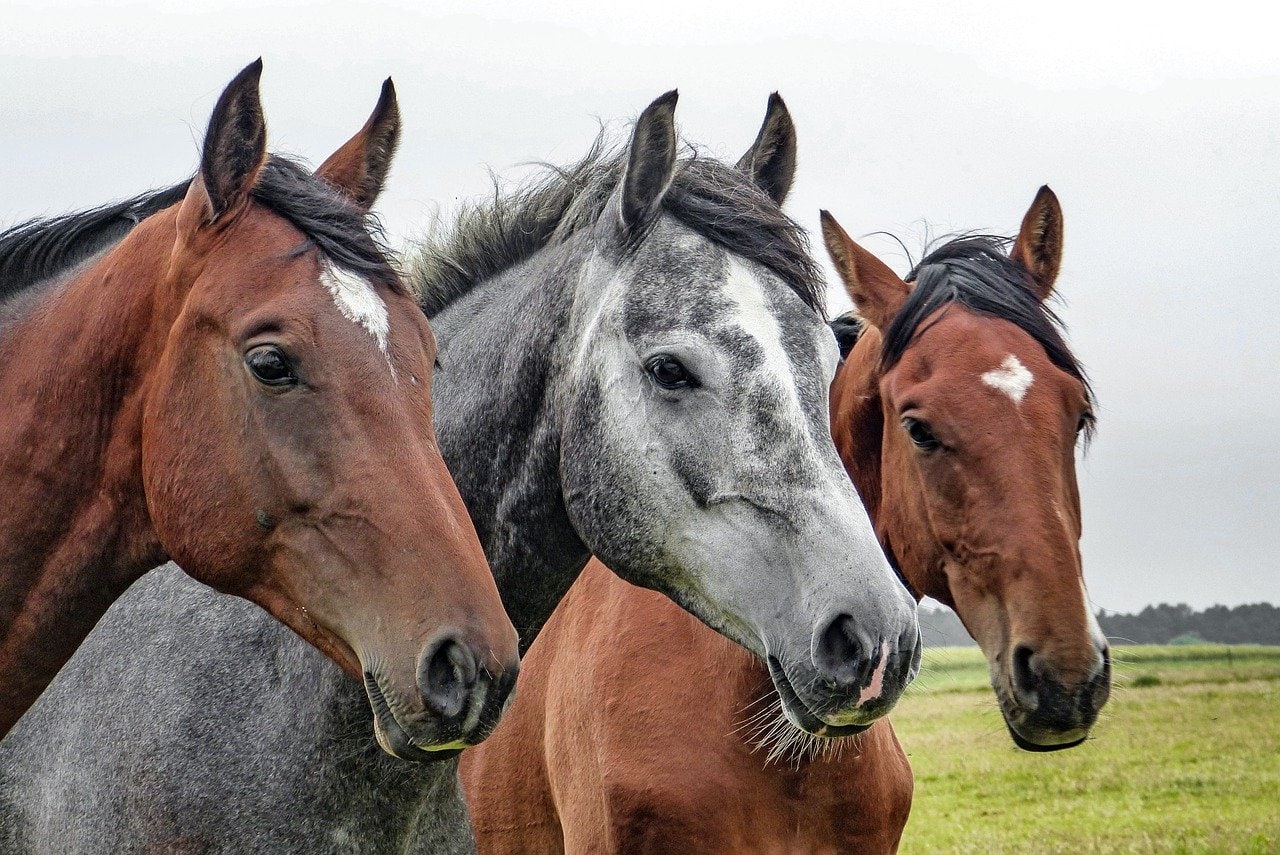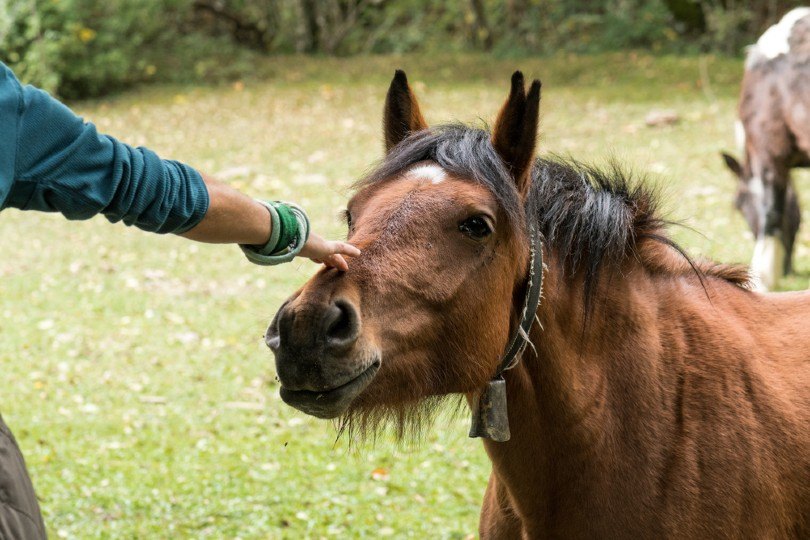
Riding bareback on a horse is a fun way to get in a quick ride. You can simply jump on and get going instead of having to saddle up. Many horse owners wonder if bareback riding is better for horses. Do saddles hurt horses?
You might be surprised to learn that riding a horse with a saddle is usually less painful than riding them bareback.
Why is that the case? Does this mean you shouldn’t ever ride bareback? Before you get too worried, we gathered the most up-to-date research on saddle versus bareback riding. Keep reading if you’re curious to know why saddles don’t hurt horses and can even be better for them.
Do Saddles Hurt Horses?
An experienced veterinarian and expert on equine gaits, Dr. Hilary Clayton performed a study at Michigan State University on the effects of riding horses bareback versus with a saddle, and her findings were intriguing. Seven horses were ridden both with and without a saddle. The saddles were all checked to fit each horse, and they used pressure-sensitive mats underneath the saddles as most riders do. The same rider rode each horse, and data was recorded on the force and pressure that the horses experienced on their backs.
After all the data was collected, Dr. Clayton found that excessive pressure could cause muscle damage by disrupting circulation and crushing capillaries, leading to bruising and pain. Her results concluded that the seat bones of riders created more pressure when riding bareback than when riding with a saddle. The saddle did a better job at evenly distributing the pressure, while bareback riding put all the force onto one place.

Should You Stop Riding Bareback?
Even though bareback riding is more likely to cause pain to the horse, that doesn’t mean it has to halt altogether. Instead, saddle-less riding should just be done with caution and less frequently than with a saddle. This statement is especially true if the rider is heavy or if you plan to ride for a prolonged amount of time or for a few days in a row. If you do plan to ride bareback, always monitor your horse for soreness around their back area, and give them plenty of time to recover between each session.
How Should a Saddle Fit?
While you now know a saddle is a safe option when riding your horse, you also have to understand that not all saddles are going to feel comfortable for them. Fitting your saddle to your horse the right way is a crucial part of any ride. Saddles not only influence the rider’s technique but also ensure safety for both you and the horse.

Understand the Withers
The withers of a horse are the highest part of their back and are located at the base of the neck and directly above the shoulders. The tree of a saddle is the base around which the rest of the saddle is built. Average withers usually fit a medium or regular tree. More rounded withers and flatter backs usually require a wider tree fit. Draft horses have extra-wide withers and require extra-wide trees.
The withers need room to move with the tree. Hold your index, middle, and ring finger straight out with your thumb pointed up and slide your hand between the underside of the saddle and the horse’s withers. There should be a clearance on the top and sides of the withers so they can easily move. If the saddle is too tight against them, they won’t be able to bend.
Size Matters
Properly fitting saddles should stay centered on your horse when they’re standing on level ground. If it is sliding off to one side, you might need a different-sized saddle.
Most saddles are designed to go over the horse’s shoulders and lumbar. The weight should be evenly distributed over these areas when sitting on them, despite a portion of the saddle extending slightly past their last rib. If the horse’s saddle is too far back, it makes it harder and more painful for the horse to carry the weight.

Go for a Test Ride
If you’re still unsure about your saddle fitting right, go on a test ride, and then look at the impression left after you remove the saddle. Check that the horse’s hair is flattened equally on all sides but not down the middle of their back. You don’t want to be sitting directly on their spine.
Is Bareback Riding Safe?
Bareback riding is safe when done in moderation. However, you don’t want to continue to bareback ride if it is causing your horse significant pain or irritation. Not only is using a saddle safer for your horse, but it also ensures your safety. There won’t be any unsupported dismounts or falls when you use a saddle, and even though it takes extra time to put on, it is well worth the extra minutes of work so everyone is more comfortable.
Final Thoughts
It’s relieving to know that saddles don’t hurt horses. With all the straps and buckles, it’s easy to understand the concern. Fortunately, saddles were created with the safety of both riders and horses in mind. They make smoother and more comfortable rides for everyone, and your horse will appreciate you putting in the time to strap it on.
Featured Image Credit by: Patou Ricard, Pixabay










